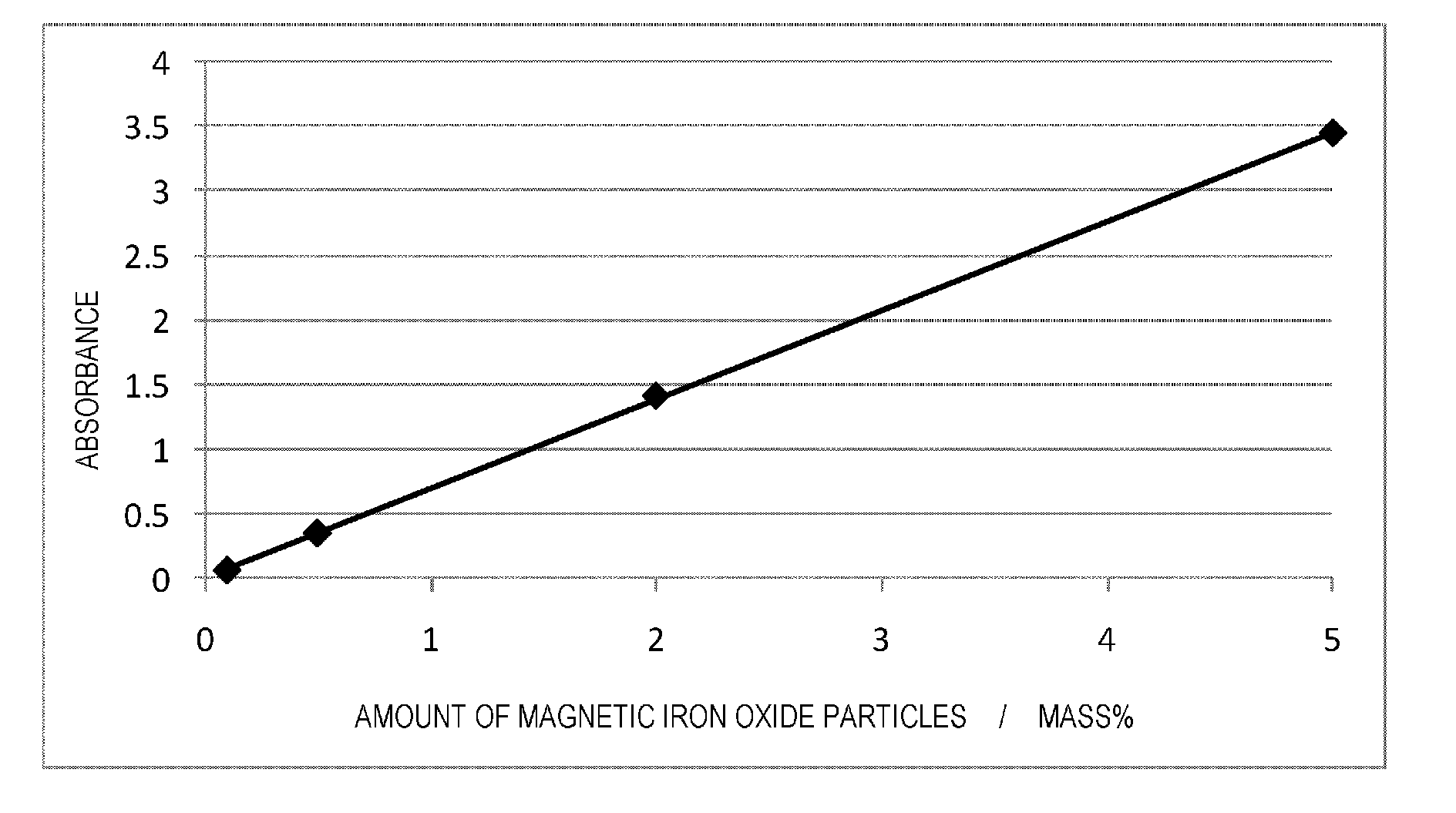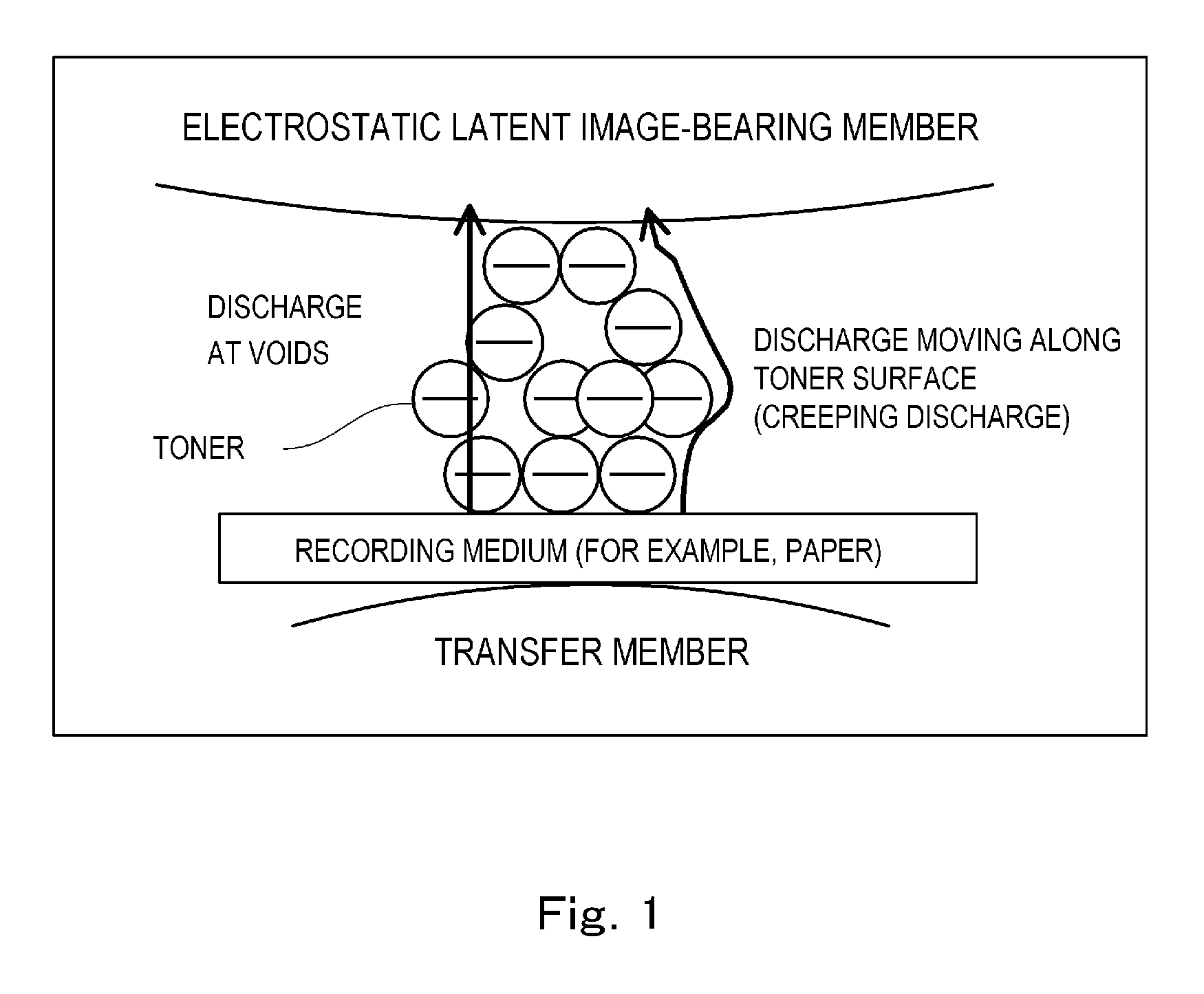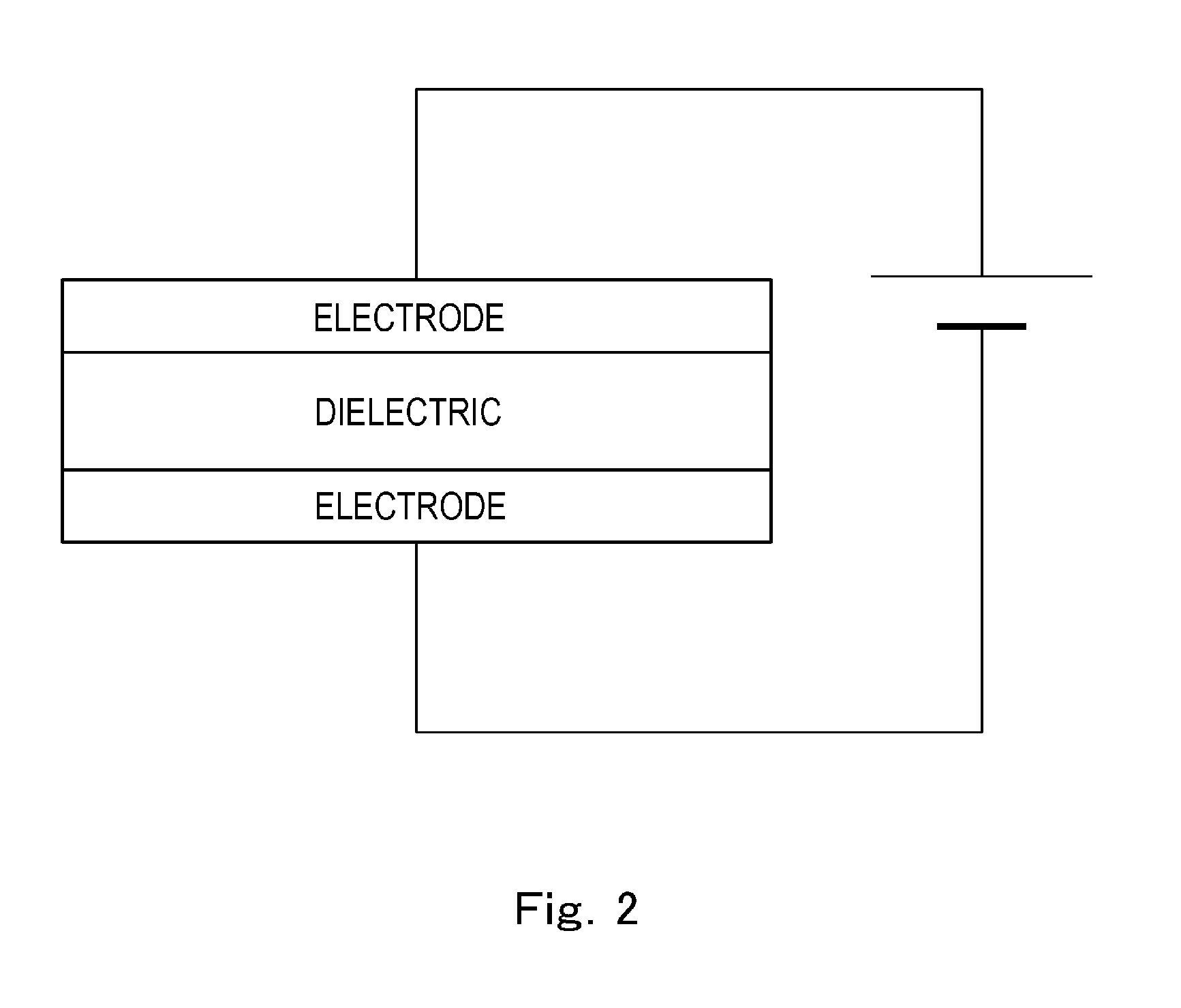Magnetic toner
a toner and magnetic technology, applied in the field of magnetic toner, can solve the problems of white void formation, image disturbance, and toner layer disturbance, and achieve the effect of excellent transferability and high image density
- Summary
- Abstract
- Description
- Claims
- Application Information
AI Technical Summary
Benefits of technology
Problems solved by technology
Method used
Image
Examples
example 1
The Image-Forming Apparatus
[0286]The image-forming apparatus was an LBP-3100 (Canon, Inc.), which was equipped with a toner carrying member that had a diameter of 10 mm; it was modified by connection to an external power source so that its transfer bias could be modified. Discharge is facilitated by a high transfer bias, enabling rigorous evaluation of the transfer defects. In addition, the transferability is generally severely tasked under a high-humidity environment. Using this modified apparatus and magnetic toner 1, a 1500-sheet image printing test was performed in one-sheet intermittent mode of horizontal lines at a print percentage of 2% in a high-temperature, high-humidity environment (32.5° C. / 80% RH) at an ordinary transfer bias (0.5 kV). After the 1500 sheets had been printed, a single print of a solid black image was output. The transfer bias was subsequently set to 1.5 kV and a solid black image was output.
[0287]On the other hand, using this modified apparatus and magnet...
examples 2 to 46
[0294]Image output testing was performed as in Example 1, but using magnetic toners 2 to 46. According to the results, all of the magnetic toners provided images at at least practically unproblematic levels in pre- and post-durability testing. The results of the evaluations are shown in Table 5.
PUM
| Property | Measurement | Unit |
|---|---|---|
| temperature | aaaaa | aaaaa |
| frequency | aaaaa | aaaaa |
| volume-average particle diameter | aaaaa | aaaaa |
Abstract
Description
Claims
Application Information
 Login to View More
Login to View More - R&D
- Intellectual Property
- Life Sciences
- Materials
- Tech Scout
- Unparalleled Data Quality
- Higher Quality Content
- 60% Fewer Hallucinations
Browse by: Latest US Patents, China's latest patents, Technical Efficacy Thesaurus, Application Domain, Technology Topic, Popular Technical Reports.
© 2025 PatSnap. All rights reserved.Legal|Privacy policy|Modern Slavery Act Transparency Statement|Sitemap|About US| Contact US: help@patsnap.com



